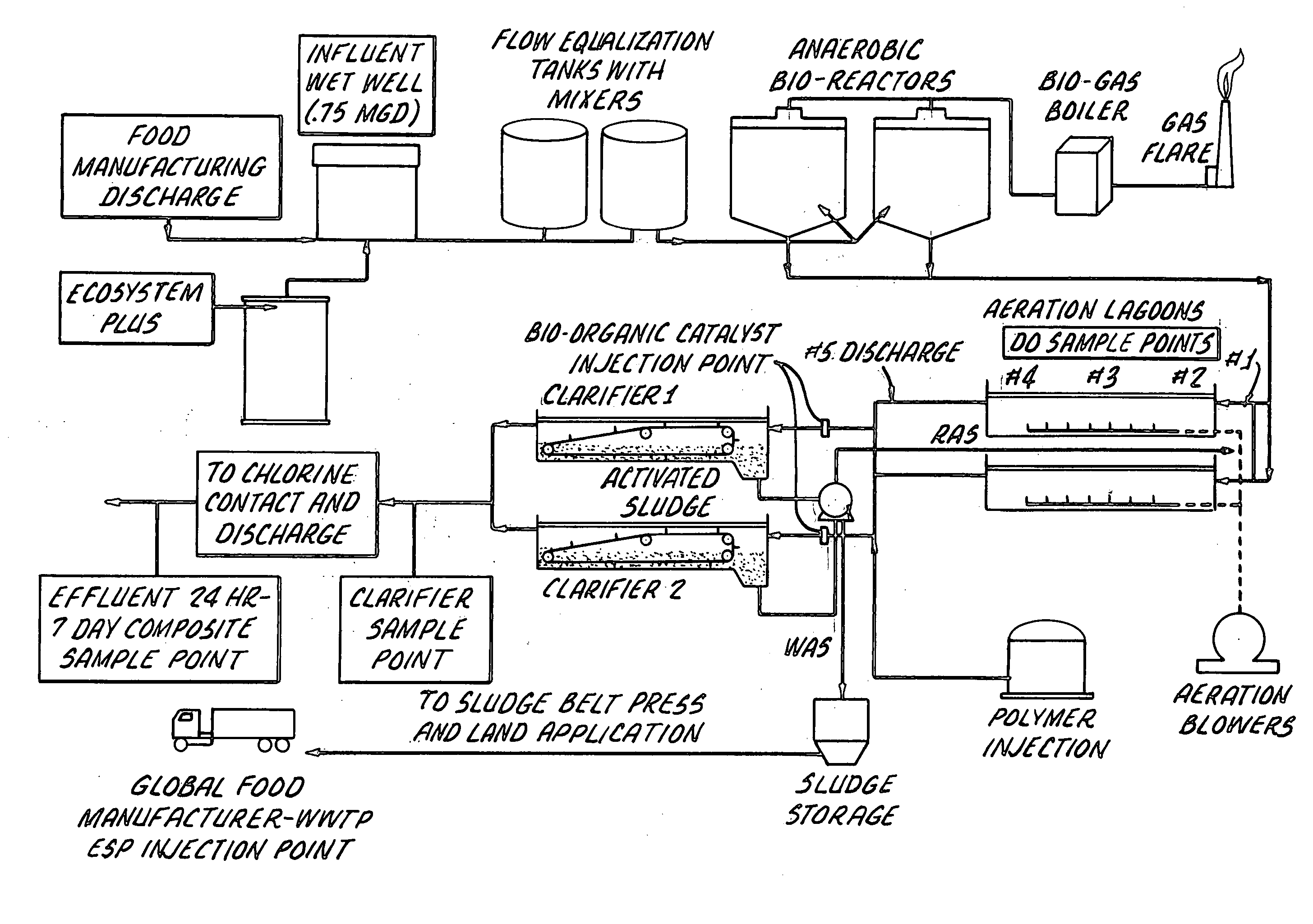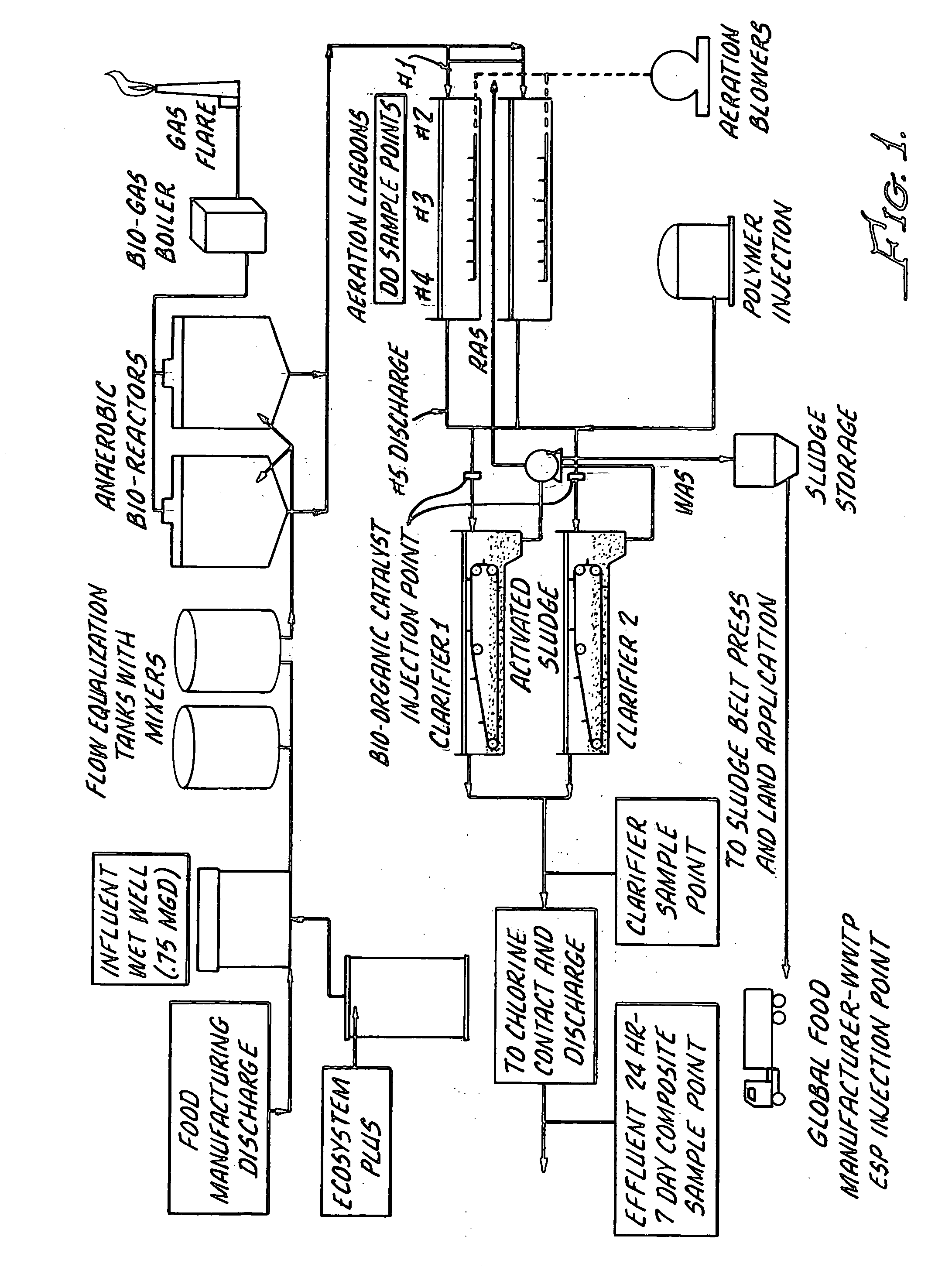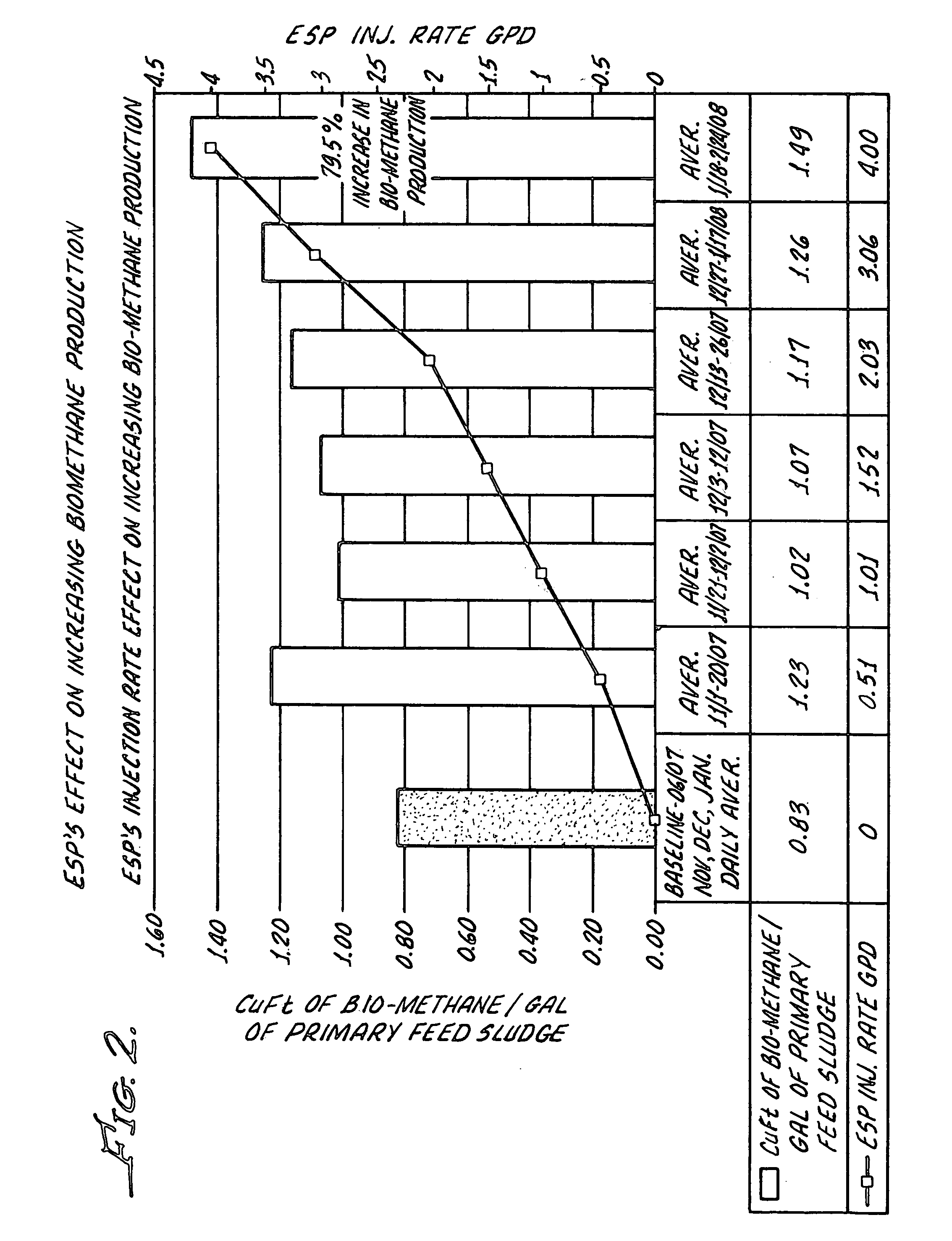Anaerobic process for treating organic material to generate biogas
a biogas and anaerobic technology, applied in the field of biologically treating fluids, can solve the problems of inability to address the variety of contaminants, biological methods are incapable of providing a full purification or complete conversion of such organic contaminants, etc., and achieve the effect of reducing volatile organic solids
- Summary
- Abstract
- Description
- Claims
- Application Information
AI Technical Summary
Benefits of technology
Problems solved by technology
Method used
Image
Examples
example 1
[0036]The process of the present invention may be exemplified by the treatment of the discharge from a food manufacturing plant. As shown in FIG. 1, two sequential anaerobic bioreactors are in line subsequent to the influent wet well(s) where the discharge from the food manufacturing is collected.
[0037]The flow rate is 0.75 million gallons per day (MGD). In the anaerobic bioreactors, the flow from the wet wells is contacted with the final composition described above. The ratio of the flow of waste water and the final composition varies from 0.0000667% TO 0.0002667%. After treatment in the anaerobic zone, the liquid effluent from the bioreactors is led to one or more aeration lagoons for further treatment. The gaseous effluent from the bioreactors is collected and either flared or recycled (and may be treated e.g. to increase its BTU value, prior to recycling) for use in providing heat to the bioreactors and or Food processing Boiler used to generate heat steam for the manufacturing ...
example 2
[0039]In a separate example of the process of this invention, the waste water from a large cheese manufacturing plant was treated in an anaerobic digestion zone with the final product of Table 3, above, at a ratio of from 0.0220 to 0.1484 final composition of Table 3 influent. The Average residence time in the anaerobic zone was 2.72 to 4.28 Day depended on Influent Flows. The temperature during said treatment was from about 94 to about 102 degrees F. In this trial, the removal rate of the TCOD increased from 29% to 73.9%. Biomethane production increased from 1000 cubic foot per hour to 1,800 cubic foot per hour. This is a surprising increase of 80%.
[0040]The result is reported in FIG. 2.
example 3
[0041]The process of the present invention was also utilized in the treatment of sewage sludge from a municipal source. In this trial the influent to the anaerobic zone of a municipal sewage treating plant was contacted with the final composition of Table 3, above, at a ratio of 0.0271 to 0.122 ESP Gals / 1,000 gal Primary Feed Sludge and a temperature of 92 To 102° F. This residence time of the mixture of sewage sludge and the final composition in the anaerobic zone was 15 to 18 Days depended on Influent primary feed loading to A.D.
[0042]A typical Municipal Waste Water Treatment Facility processes 1000 gallons per day of wastewater for every person served.
[0043]Approximately 1.0 cubic foot (ft3) of digester gas is produced by an anaerobic digester per person per day.
[0044]The heating value of the biogas produced by anaerobic digesters is approximately 600 British thermal units per cubic foot (Btu / ft3).
[0045]In the present example, the following results were obtained:
[0046]T.S. Remova...
PUM
 Login to View More
Login to View More Abstract
Description
Claims
Application Information
 Login to View More
Login to View More - R&D
- Intellectual Property
- Life Sciences
- Materials
- Tech Scout
- Unparalleled Data Quality
- Higher Quality Content
- 60% Fewer Hallucinations
Browse by: Latest US Patents, China's latest patents, Technical Efficacy Thesaurus, Application Domain, Technology Topic, Popular Technical Reports.
© 2025 PatSnap. All rights reserved.Legal|Privacy policy|Modern Slavery Act Transparency Statement|Sitemap|About US| Contact US: help@patsnap.com



